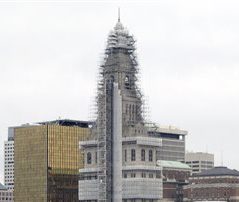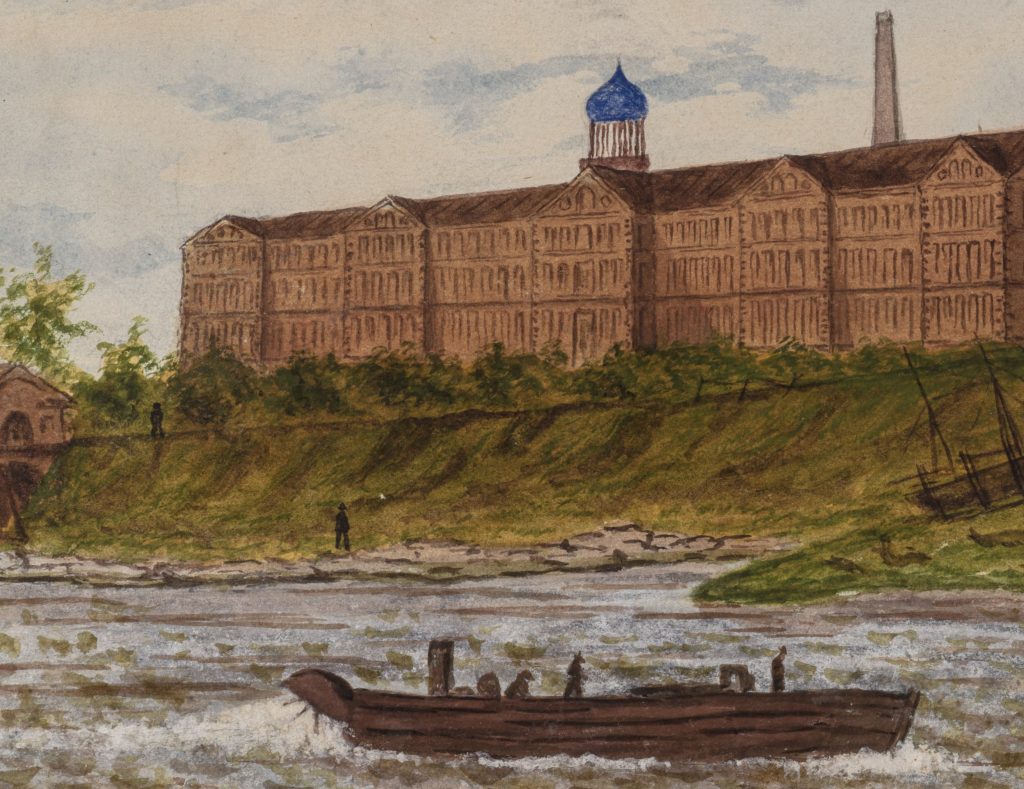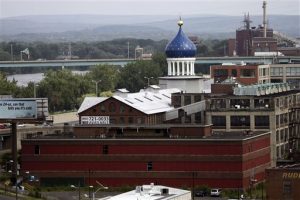The Buildings of Hartford: The Colt Building
by Vanessa Villar
You may be surprised to discover the historical significance that lives in Hartford. The city of Hartford, CT has transformed on multiple occasions since its initial development due to industrialization, transportation, commercial and corporate development. Despite these changes, its historical significance is preserved in the architecture of the city. The architecture in Downtown Hartford specifically demonstrates the changes that occurred prominently in the 20th century.
The Colt Building
In the era of industrialization, one of the most notable industries was the Colt Patent Fire-Arms Manufacturing Company founded by Samuel Colt. In 1836, Colt patent the first revolving cylinder gun in Paterson, New Jersey (Simon). The firearms production was slow and essentially failed due to the challenging economy and struggle of starting a business. However, Colt remained hopeful and in 1846 he received a letter from Samuel Walker, a Texas Ranger, who had successfully used Colt’s gun in combat and raved it as the “weapon of advantage on the Great Plains” (Simon). Due to this praise, the sales of Colt’s arm increased enough to motivate Colt to develop an armory in his hometown of Hartford, CT. While representing the American manufacturing at the Crystal Palace Exhibition in London, Colt is impressed by the British model of industrial communities. This inspiration to recreate such a community called “Coltsville,” to not only be driven by armory but also equip additional facilities, worker’s housing, community centers, and a home for him and his wife Elizabeth Colt (Holsey).
Sam & Elizabeth Colt's Legend & Legacy by William Hosley (duration 1 hr. & 15 min)
Presentation at the South Windsor Historical Society
(Feb. 11, 2016)
In the summer of 1855, began the construction of the brownstone armory likely to be designed by Octavius Jordan. In an article written by the United States Magazine, the armory was described as “being shaped like an H, with a five-hundred-foot-long, sixty-foot-wide, three-story building facing the river, and a similar, one-story, structure set back from the river measuring five hundred feet long and forty feet wide” (Granston). It’s original construction of brownstone and most notably it’s blue onion dome and gilded rampant colt, as Colt-historian William Hosley writes, the armory became the centerpiece of his dream compound of Coltsville (Granston). Colt’s Armory was a tremendous factory that quickly received international attention for its unique structure and machine-based manufacturing. In the brick of his success, and initiating an expansion to the armory, his triumph slowly turned to tragedy as he passed away in 1862 leaving his industry to Elizabeth (Simon). To much further dismay, the Colt industry suffered when the factory was burned to the ground who many believed to be by Southern arsonists during the Civil War in 1864.
Almost immediately Elizabeth Colt knew she was not going to let her husband’s dream be torn away and made plans for the reconstruction of the armory. Despite such tragedy, the armory continued to operate in an unburned wing of the building (Simons). It was rebuilt to nearly exactly in its original form, with its foundation being now brick instead of brownstone and implementing an additional story. Most importantly, its stable blue onion dome was also reconstructed. Following the fire, the factory continuously evolved its design and structure while still preserving its historical makeup. Today, the Colt Armory exists as a historical landmark and as stated in its nomination being, “two structures—the Fire Shop and the Foundry—are still standing from the original 1855 factory; the signature East Armory, rebuilt in 1867, the South and North Armories and the Machine Shop, built in 1916 for the buildup to World War I; the warehouse (ca. 1916), the World War II office building (1942), and several other ancillary structures.” Although these physical structures exist, it has not been operated as firearm factory since 1993, when its final use of the Machine shop came to an end.
Sources:
EnjoyTodayToo. “Sam & Elizabeth Colt’s Legend & Legacy by William Hosley”. Online video clip. YouTube, 12 February 2016. (Accessd 16 May 2018).
Granston III, David W. A Story of Sunshine and Shadow: Elizabeth H. Colt and the crafting of the Colt legacy in Hartford. Diss. University of Delaware, 2016.
Hintz, Eric S. “A Day at the Armory.” Lemelson Center for the Study of Invention and Innovation. Smithsonian Institution, 12 Dec. 2013. (Accessd 16 May 2018).
Hosley, William. “Making a Success of Coltsville.”Hog River Journal, Vol. 4, no. 1, 2005/2006, pp. 30-35, http://www.hogriver.org/issues/v04n01/coltsville.htm (Accessed 16 May 2018). Also available at https://www.ctexplored.org/making-a-success-of-coltsville/
James C. O’Connell and Bruce Clouette. National Historic Landmark Nomination: Coltsville Historic District, 2007
Simon, Kenneth A. Colt, Legend & Legacy. DVD. Connecticut Public Television, 1997.


